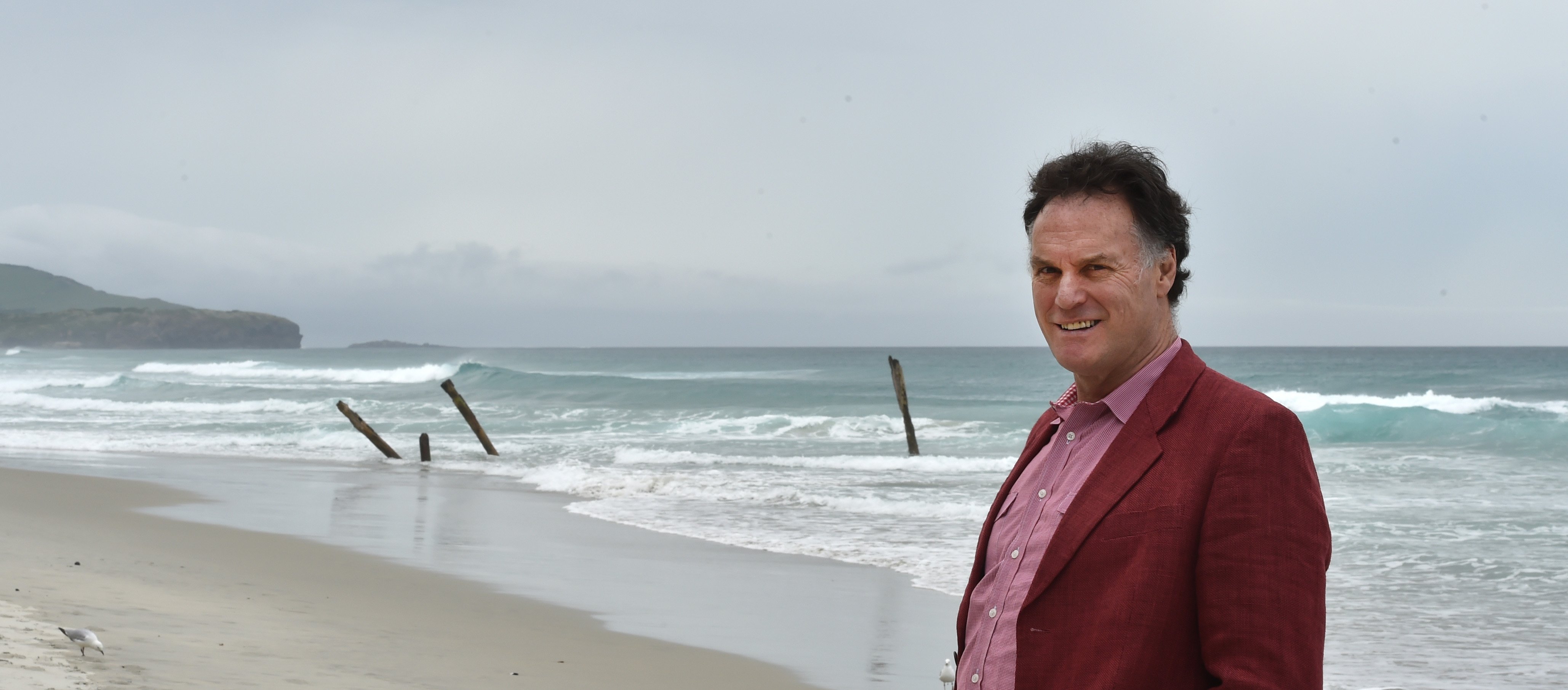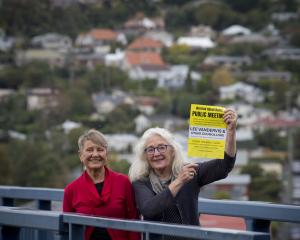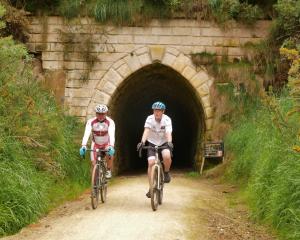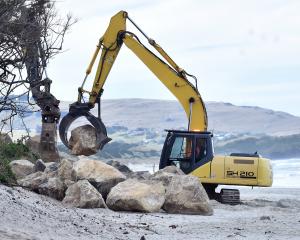
Jules Radich wants a loosely planked wooden groyne at St Clair to be repaired and a camera installed to record what difference it makes.
The sand-trapping structure could build up the beach — a technique that had seemed to work in the 20th century — and buy the city time before expensive solutions to erosion problems might become necessary, he said.
Cr Radich said repairing the line of poles would cost about $100,000 and there would then be minor maintenance costs.
The approach had not gained favour for St Clair recently because of purely political reasons, he said.
Broad approaches for management of the St Clair to St Kilda coast in the coming decades were outlined in a draft plan released by the Dunedin City Council for public consultation last week.
They included strategies or techniques to "hold the line" — such as groynes, beach nourishment and upgrading the St Clair seawall — and the alternative longer-term aspiration of "coastal setback", which would involve developing a more natural and resilient coast by carrying out work to allow the sea to move landward.
The price tag of work could extend to hundreds of millions of dollars over the next century.
Coastal setback would require changes to land use and substantial lead-in time to implement, the draft plan said.
Some techniques for holding the line would be needed in the meantime.
Development of the St Clair to St Kilda coastal plan began in mid-2019.
Dunedin City Council coastal specialist Tom Simons-Smith said the $700,000 cost had covered work such as ongoing technical and project management support, reporting on technical data gaps and extensive community engagement.
"Support has also been provided in graphic design, drafting of the coastal plan document and planning for future work required over the coming years," Mr Simons-Smith said.
"A coastal process study and investigation of the contamination in the dunes at Middle Beach have also been delivered as part of the project."
Mr Simons-Smith said an old landfill under Kettle Park, by Middle Beach, posed a challenge and the council wanted to get a better understanding of the risks there.
Decisions would have to be made for long-term management of St Clair, Middle Beach and St Kilda as a whole, he said.
They related to what could be done to maintain the existing coastline, or better accommodate coastal processes and rising seas.
"We want a long-term plan to manage the coast and to work with, rather than against, natural processes," the draft plan stated.
Groynes and beach nourishment were among potential techniques for holding the line.
Further work was planned to evaluate the suitability of shortlisted options, including groynes, offshore structures and an upgraded seawall, he said.
"In the meantime, there are a range of other short-term measures identified in the draft plan, including improving public access points to the beach, plantings, and sand stockpiling to help in storm responses."
Sand stockpiling was under way, using sand from Willowridge Developments’ Ocean Heights subdivision as part of a deal expected to save ratepayers more than $1million.
Cr Radich said in a Facebook post coastal setback at St Clair "shows that the Esplanade will be demolished and returned to beach".
"However, when will the removal of the seawall and all the businesses behind take place?
"Not any time soon and not in the next 10 years, because the city is already sailing close to its debt limit and cannot fund the hundreds of millions required."
Cr Radich has a petition with more than 4000 signatures from people calling for the St Clair poles to be repaired.
He urged the public to have its say on the coastal plan.
Feedback is open until December 17.
Comments
Groynes won't work on a beach where sediment transport is dominated by onshore and offshore movement as at St Clair (see numerous consultants reports to council). They only work on beaches where sediment moves along shore and trap sand on that side, then erode of the other side (first year Uni geography). These were never effective (there is no evidence despite claims) when they were built and will be an expensive eyesore if replaced. Structures built in surf zones are never minor costs and will be expensive to maintain as they get damaged by storms.
You may be correct Wilfred, but given the huge expense that the great minds and appropriately educated persons have already expended on placing more health hazards/rocks/sand sausages along the water front I would think the cost of trialing a groyne would be a no brainer. Surely placing 400dia marine piles at 1.5m centres and driven 4.0m deep with palings (rough and rude design!) would be a small cost and excercise given the cost of having a digger there monthly placing rocks and the like?
Yes structures in surf zones do get damaged, but even it cost twice what Councillor Radich estimates it's still less than a third of the cost of the paperwork/consultation and designs to date. More paperwork is simply that, digging holes and action is what is required.
If I'm correct (on my first point) why waste the money?
Because sitting around having meetings and consultation between stakeholders and figuring costs to date and future expenditure will achieve very little other than spending more money.
My vote is to actually remove the entire esplanade back to where it was 20 years ago, remove the parking and mass vertical concrete structure they have placed in the oceans way - apparently that isn't a happening thing as someone would have be held accountable for the stuff up so trying to mitigate the effect of the ocean on sand movement at Middles and the end of the ramp would be paramount I would have thought, but as you say 1st year geography classes would have taught the engineers this long before placing it there.
I live in a close proximity to all the action so am quite keen to see some action rather than more discussions from people whom are quite at home discussing things to the nth degree- rather than doing things.
Just my take of course.
Wilfred - as others have said you may be right, you may not be right. There is an old saying, 'A picture is worth 1000 words' - take a look at the images of them in place years ago and what the have done to the beach. True story: experts built a dhow (ship with mast) in the Middle East using computers and modern tools, they needed the traditional dhow builders to sort it because the new way of building never worked. Suspect the same for this.
I would like to see a serious scientific debate of the use of groynes. When we had groynes, the beach was healthy for generations; when they wore out, the dunes and beach eroded. Is it that simple? It seems like a cheap experiment compared with many other projects adopted by the City. If budget is an issue, then ask for donations. I would happily give $100 toward this project. Others will be similarly happy to donate.
Wilfred, what about angled groynes (e.g., dovetails) to capture the onshore-offshore movement?
You don't want to stop the offshore-onshore cycling of sand - that is exactly what beaches do in response to storms and calm periods. That mobility is what allows beaches to dissipate waves energy, then they recover after storms. Its that dynamic behavior we should be protecting, not private property with structures (groynes, seawalls, breakwaters) that hinder that dynamic response. Allowing beaches to be mobile is by far the best thing at the coast and in the long term (think inter-generational) rate payers.
Wilfred. on the contrary to your comment, there is a great deal of evidence that groynes worked brilliantly at St Clair for all of last century except when they were allowed to fall into disrepair (like now). There not 1 single photo showing leeside erosion on a St Clair groyne either. Far from an eyesore, the remaining groyne has been the most photographed object in Dunedin for decades until its demise. There is a detailed report at https://www.stclairbeach.co.nz/ that might fill in some gaps for you.
I think your slideshow shows this is a dynamic beach doing its thing and this has nothing to do with the groynes at all. The absence of leeside erosion supports my argument that there is no along shore sediment transport for a groyne to capture. Sediment movement is on and offshore, episodes of a healthy beach in some photos will correspond to onshore sand movement and erosion when the sand has moved offshore. Beauty is in the eye of the beholder, but aesthetically groynes ruin a beach vista, in my view. Not to mention the barrier they provide to walkers along the beach.
AKMONS.....tested, proven, all over the world in far more treacherous
situations than St Clair.
Cr Radich's plan to replace the Groyne should be placed front and
centre of any erosion solution. It's worked before, it will work again.
The Akmons should be placed to protect Kettle Park landfill and the St Clair
seawall. Akmons diffuse waves better than any other solution known.
Sausages are a complete money pit and high maintenance.
A combination of Groyne and Akmon carefully situated for best effect
should be studied.
It seems DCC just continue to sit on their jolly hands over this.
When the Kettle Park landfill is breached, the DCC will look back in horror, just like they did with years of looming house shortages, and almost too late for
a new landfill.....useless, just useless












